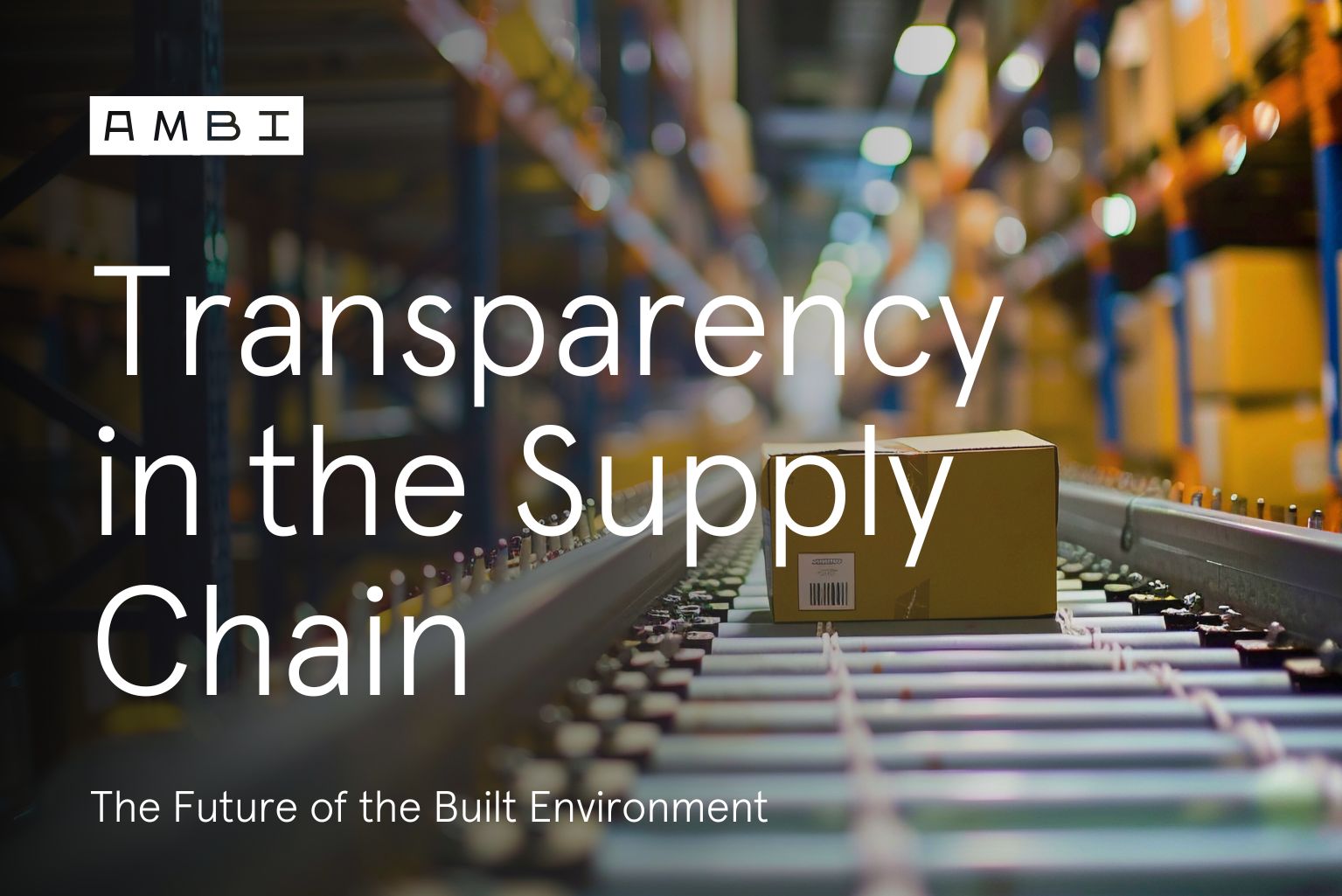The materials and systems that shape our built environment don’t exist in a vacuum. Every component—every fixture, panel, finish, or system—is part of a larger story about origin, intention, and impact. As a brand and marketing partner to manufacturers, fabricators, and innovators across the built environment, AMBI is seeing a powerful shift ripple across our clients’ industries: transparency is no longer a differentiator. It’s a mandate.
This expectation isn’t limited to sustainability leads or compliance managers. Today, marketing teams, sales leaders, product developers, and C-suite executives are being called on to clearly articulate what’s in their products, how they’re made, and why it matters—to people and the planet.
It’s a new era of brand accountability. And we’re here to help our clients own it.
The Growing Market Demand for Supply Chain Clarity
Whether you’re producing lighting, furniture, HVAC systems, or acoustics solutions, the bar for supply chain visibility has been raised. According to the 2023 World Green Building Trends Report, over 61% of AEC professionals now prioritize transparent material sourcing when selecting partners or products. In other words: your ability to show what’s behind your offering is starting to influence whether you get specified at all.
This is where certifications like Declare come into play. Developed by the International Living Future Institute, the Declare label functions like a nutrition facts panel for building materials—listing ingredients, sourcing, and end-of-life pathways. It supports compliance with high-impact frameworks like LEED, WELL, and the Living Building Challenge, and is becoming a go-to resource for specifiers seeking verified, Red List-compliant solutions.
For AMBI’s clients, this means that how you tell your product story matters just as much as the data itself. Clear communication, visually engaging breakdowns, and well-branded transparency reports can make the difference between getting considered—or overlooked.
What This Means for the Brands Building the Future
Transparency in the built environment isn’t just about compliance—it’s about positioning. It allows brands to differentiate not only by what they make, but by how they operate. As environmental, social, and governance (ESG) concerns take center stage, brands that can prove their impact—and articulate it in plain language—will win greater trust with architects, designers, and end users.
That’s why AMBI partners with clients to bridge the gap between technical documentation and market storytelling. We help turn complex information—like material health disclosures, embodied carbon stats, or supply chain traceability—into brand assets. Whether it’s content for a website, a sustainability brochure, or a CEU presentation, our goal is to make transparency not just digestible, but compelling.
We’ve also seen firsthand how platforms like Mindful Materials and Ecomedes are reshaping how buyers search and evaluate building products. Your brand’s presence (or absence) on these platforms—and how your transparency data is presented—can directly affect market perception and project participation.
Future-Proofing Brands Through Strategic Transparency
The future of building product marketing won’t be about vague claims like “eco-friendly” or “green.” It will be about specificity, traceability, and integrity—backed by data and delivered with clarity.
From product development to brand messaging, AMBI helps manufacturers prepare for this reality. Because the ability to articulate your values, demonstrate your practices, and invite trust isn’t just good storytelling—it’s good business.
The built environment is changing. And the brands who lead will be the ones who don’t just make better products—but communicate them better, too.
Want to make transparency a core part of your brand story?
Let’s talk. AMBI helps manufacturers and innovators across the built environment turn transparency into a competitive advantage—through certification strategy, sustainability storytelling, and clarity-focused design.




